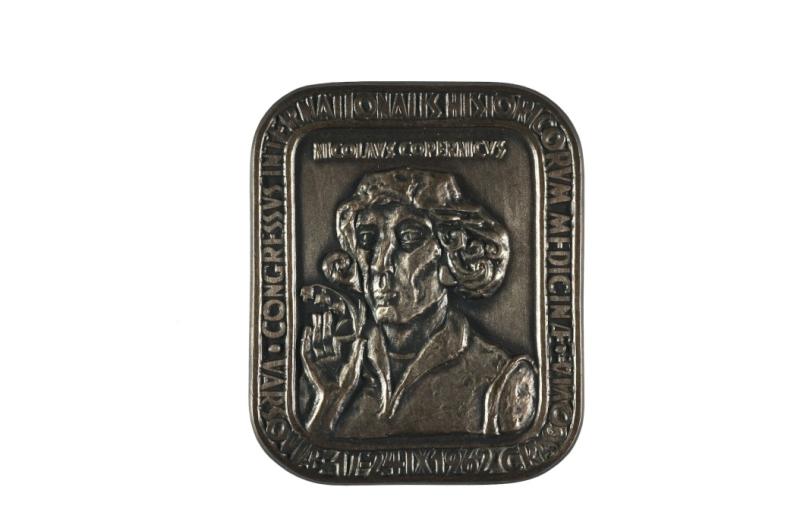In 1501 members of the Warmian chapter having taken notice of Copernicus keen interest in medicine, granted him a leave of absence to take up medical studies, justifying their decision with the hope that after completing his studies he would become medical advisor to our very reverend master (Bishop Lucas Watzenrode) and the canons from the chapter on his return.
Copernicus then went back to Italy where he had studied canon law before (and possibly medicine, too) and enrolled at the University of Padua. At that time the University of Padua was famous for its excellent teachers providing top-quality instruction in both theoretical and practical medical studies. Gabriel Zerbi of Verona, Pietro Trapolin, Giovanni dAquila and Giordano dela Torre explicated and commented upon the works of Avicenna, Hippocrates and Galen. Once a year the University held public dissections for senior students of medicine which Copernicus must have attended. Copernicus seems to have treated his medical studies most seriously since he wrote on the margin of a medical treatise: Remember this, Doctor! Avicennas saying that ignorance leads to manslaughter is true; therefore his saying should be engraved in the memory of every prudent physician.
During his stay in Padua he purchased some medical textbooks including those by Hugo Senensis (Super quarta Fen primi Canonis Avicennae, 1485), Joannes Michael Savonarola (Practica medicinae, 1486), Valescus Tarenta (Practica siue Philonium, 1490), Matthaeus Silvaticus (Liber pandectarum medicinae, 1498), and Petri de Argelatta (Chirurgia magistri, 1499).
Copernicus did not crown his medical studies with an academic degree. His knowledge and skills acquired, however, were more than sufficient for him to have a good reputation as a physician; all the more so in that there were no clear borders between the medicine of his time, and astronomy and astrology.
When Copernicus retuned to Warmia in 1503 he was sent to Lidzbark Warmiński (Heilsberg) to take care of his uncle, Lucas Watzenrode, Bishop of Warmia. Without any doubt Copernicus was one of the best known practising physicians in the Royal Prussia of his time. He communicated with other distinguished physicians; in the most difficult cases he would consult Doctor Laurentius Wilde of Królewiec (Konigsberg) or Jan Benedykt Solfa, the court physician to the Polish King, Sigismund the Old (Zygmunt Stary). What emerges from surviving correspondence is that Copernicus attended to the most distinguished figures from his milieu – his services were sought inter alia by all the Warmian bishops (his contemporaries) Watzenrode, Fabianus Lusianus, Mauritius Ferber and Joannes Dantiscus.
As an experienced physician, he also treated Frombork canons: Tiedemann Giese, suffering from malaria, Felix Reich, troubled by haemorrhages, and his own leprous brother, Andreas. Copernicus also treated relatives of his fellow canons and could also have taken care of the patients of the Hospital of the Holy Spirit in Frombork (Frauenburg); according to Szymon Starowolski (17th c.), he gave free medical attendance to the poor. Copernicus never stopped expanding his theoretical knowledge of medicine, constantly replenishing his collection of medical books and using the knowledge acquired in his medical prescriptions.
Obviously, Copernicus did not contribute to any significant medical breakthrough. As a son of his own times he battled sickness with remedies that were in line with existing knowledge and practice. His surviving written prescriptions clearly indicate that in the drugs he was prescribing he often included components used by other physicians, though avoiding such remedies as urine, frogs, snakes, bats, animal claws and poisonous substances. He believed in remedies whose composition was not too complex.
Numerous portraits showing the great astronomer with a lily-of-the-valley – a symbol of medical science – testify to the continuing awareness that Copernicus was also a member of the medical profession.
Bibliography:
- E. Chantry-Price, Nicolaus Copernicus – astronomer and physician, "History of Medicine", vol. 7: 1976, no 1–2, pp. 4–7.
- Sieńkowski, Mikołaj Kopernik jako lekarz i medycyna jego czasów, "Archiwum Historii Medycyny", vol. 36: 1973, issue 2, pp. 249–259.
- Biskup, Regesta Copernicana, Warszawa 1973.
- Małłek, Mikołaj Kopernik jako lekarz i prawnik, "Rocznik Muzeum Okręgowego w Toruniu", vol. 10: 2001, pp. 24–28.
 English (United Kingdom)
English (United Kingdom)  Polski (PL)
Polski (PL) 






